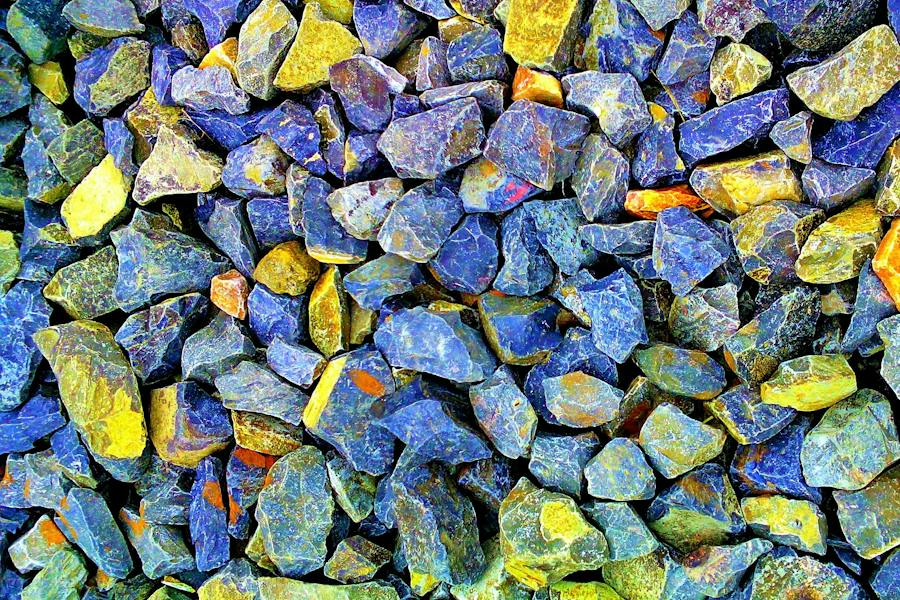Shale turns into slate through a process of metamorphosis caused by high pressure and temperature. This results in the compaction and hardening of the shale into the fine-grained, foliated rock that is slate.
This metamorphic process occurs deep within the earth’s crust and mantle. Shale is a sedimentary rock that is composed of clay, minerals, and organic matter. Over time, these layers are buried and undergo compaction and cementation to form shale. When the shale undergoes intense heat and pressure, it transforms into slate.
Slate is known for its unique texture and is often used in construction and roofing. Understanding the process of how shale turns into slate is important in the study of geology and rock formation.
Understanding Shale And Slate
Shale is turned into slate through a process called metamorphosis, where intense heat and pressure cause clay, shale, and volcanic ash to transform into a fine-grained rock with unique slate textures. Slate is the finest-grained foliated metamorphic rock.
Properties Of Shale
Shale is a type of sedimentary rock that is characterized by its fine grain size and layers. It is primarily composed of clay minerals, such as illite, kaolinite, and smectite, and quartz, feldspar, mica, and other minerals. Shale has a unique property that it splits easily into thin layers, and this property has led to it being used as roofing tiles, in construction, and as a decorative stone. Some properties of shale are:
- Dull luster
- Grey, black, or brown color
- Fine-grained texture
- Smooth to rough surface
- Clay-like smell when rubbed
Properties Of Slate
Slate is a metamorphic rock that is formed from shale under intense heat and pressure. The process of metamorphism causes the clay minerals in shale to recrystallize and align themselves in a new direction, resulting in the unique properties of slate. Some of the properties of slate are:
| Properties | Description |
|---|---|
| Color | Varies, but commonly gray, black, green, or purple |
| Luster | Can be dull to shining |
| Texture | Fine-grained and compact |
| Cleavage | Has excellent cleavage in one direction, which allows it to be split into thin, flat sheets |
| Hardness | Relatively soft, with a Mohs hardness of around 3-4 |
| Uses | Roofing tiles, paving, flooring, as a decorative stone |
In conclusion, understanding the properties of shale and slate is crucial to appreciating how shale turns into slate through the process of metamorphism. The unique properties of slate, such as its cleavage, texture, and color, make it a popular material for roofing tiles, flooring, and decorative purposes.
Metamorphism And Rock Cycle
Shale transforms into slate through metamorphosis, which involves intense heat and pressure under the Earth’s crust. The resulting fine-grained foliated rock has unique slate textures and is classified as a metamorphic rock in the rock cycle.
Metamorphism and Rock Cycle
Metamorphism is a geological process that transforms rocks from their original form to new rocks through heat, pressure, and chemical reactions. This process is essential in the rock cycle and helps in the formation of different types of rocks. The rock cycle consists of three types of rocks: sedimentary, igneous, and metamorphic. In this blog post, we will focus on metamorphic rocks and how shale turns into slate.
Types of Metamorphic Rocks
Metamorphic rocks can be classified into two types: foliated and non-foliated rocks. Foliated rocks are formed when pressure is applied unequally in different directions, causing the minerals to align parallel to each other forming a layered structure. Schist, gneiss, and slate are examples of foliated rocks. Non-foliated rocks are formed when there is a uniform pressure, causing the minerals to crystallize randomly. Marble and quartzite are examples of non-foliated rocks.
Types of Rock Cycle
Rock cycle is the process by which rocks are formed, weathered, and eroded to form new rocks. There are three types of rock cycles: sedimentary, igneous, and metamorphic. Sedimentary rocks are formed from the accumulation and compaction of sediments. Igneous rocks are formed when magma cools and solidifies. Metamorphic rocks are formed from the transformation of existing rocks through heat, pressure, and chemical reactions.
Famous Metamorphic Rock Formations
Metamorphic rocks are found all over the world, and some famous metamorphic rock formations include Migmatite, Amphibolite, Greenschist, Eclogite, Soapstone, and Mylonite. These formations are the result of different metamorphic processes that lead to the formation of unique metamorphic rocks.
In Conclusion, understanding metamorphism and the rock cycle is crucial to understanding how rocks are formed in the earth’s crust. The process of metamorphism plays a significant role in the formation of different types of metamorphic rocks, and the rock cycle highlights the relationship between sedimentary, igneous, and metamorphic rocks.
Shale To Slate Transformation
Shale turns into slate through metamorphosis, as heat and pressure cause the sedimentary rock to transform. The process changes the fine-grained shale into foliated slate, which is unique in texture as the finest-grained foliated rock of its type.
The Process Of Metamorphism
Shale to slate transformation is a notable example of rock metamorphosis, occurring when a sedimentary rock is subjected to high pressure and high temperature conditions that change its physical and chemical properties. In the metamorphism process, shale, which is predominantly composed of clay and silt, develops into slate. This process involves multiple steps, such as deformation, recrystallization, and the formation of new minerals. The recrystallization process in particular, causes the clay minerals to reorganize and grow together to form a denser rock that has an increased resistance to weathering.
Factors Involved In The Transformation
The process of metamorphism is affected by certain factors that determine the characteristics of the final product. The temperature, pressure, and the nature and composition of the parent rock, all play important roles in the shale to slate transformation. The temperature needed for the transformation ranges from 200 to 400 °C, while pressure ranges from 100 to 400 MPa. The nature and composition of the parent rock, as well as its environment of deposition, determine the type of mineral that will be formed during metamorphism.
What Causes Shale To Change Into Slate
The main factors that cause shale to change into slate are heat and pressure. The pressure that shale is subjected to in the metamorphism process is known as directed pressure because it acts in a specific direction, leading to the elongation of the clay minerals. The heat causes the growth of a new mineral known as mica, which give slate its characteristic foliation. The newly formed mineral grains in slate are extremely fine-grained and densely packed, and their alignment causes the characteristic plane of foliation that is visible in the rock. Slate is usually dark in color, with a smooth surface that makes it a popular choice for roofing and tiles.
In conclusion, the shale to slate transformation is a fascinating process that highlights the remarkable ability of nature to transform and reshape rocks. Understanding the metamorphism process and the factors involved in it is crucial in earth science and helps us to appreciate the beauty and uniqueness of slate as a metamorphic rock.

Credit: www.lathampool.com
Formation Of Slate
Slate is formed from shale through a process known as metamorphism. Heat and pressure cause the shale to transform into a fine-grained, foliated rock, resulting in unique textures that make slate the finest grained foliated rock of its kind.
Formation of Slate
Slate is an excellent example of a metamorphic rock, which is formed from the process of metamorphosis. It takes millions of years for sedimentary rocks to undergo extreme conditions, such as heat and high pressure, that eventually transform them into metamorphic rocks like slate. The metamorphosis of rocks is a slow process and occurs deep within the Earth’s crust.
Steps involved in the Formation of Slate
The metamorphic process of shale turning into slate goes through several stages that involve high pressure and temperature. Below are the steps involved in the formation of slate –
1. Burial – Shale, which is formed from fine grains of sedimentary rocks, gets buried deep under the Earth’s crust. As it gets buried deeper, it undergoes more heat and pressure, thus leading to the process of metamorphosis.
2. Compaction – As shale undergoes more pressure, it gets compacted and hardens. The compacted shale provides a robust base for the slate formation.
3. Heat – The heat from the Earth’s inner core forces the minerals present in shale to crystallize, and it solidifies, making it more potent and dense.
4. Pressure – High-pressure makes shale layers slide over each other along the plane of weakness, which results in the development of foliation in the slate.
5. Formation of Mica – The formation of mica, which is a shiny mineral, gives the slate its unique texture. The minerals within the shale re-crystallize to develop this texture.
The unique Textures of Slate
Slate has a unique texture that makes it stand out from other metamorphic rocks. It has a fine-grained, foliated texture that makes it look like pages of a book. The texture is a result of the minerals flattening out in one direction along the foliation planes. When exposed to sunlight, the shiny reflective minerals in slate give it a unique appearance. The texture of slate makes it useful for roofing, flooring, and walls in construction.
In conclusion, the formation of slate is a fascinating process that occurs over millions of years. The metamorphosis of shale into slate involves high pressure and temperature, which causes a change in the rock’s composition, and it solidifies into the fine-grained, foliated metamorphic rock known as slate. The unique texture and physical properties of slate make it a highly valued material in construction.
Credit: www.quora.com
Frequently Asked Questions Of How Does Shale Turn Into Slate
How Is Slate Formed From Shale?
Slate is formed from shale through metamorphosis. Intense heat and pressure under the earth’s crust change the sedimentary shale into fine-grained foliated rock, resulting in unique slate textures. This process results in the finest grained foliated metamorphic rock. Geologic metamorphism under high pressure and temperature in the earth’s mantle is the cause for changing shale into slate.
What Causes Shale To Change Into Slate?
Geologic metamorphism under high pressure and temperatures, deep in the earth’s mantle, causes shale to change into slate. The pressure compacts the shale into slate, and the heat hardens the soft shale into the hardened slate. Slate is a fine-grained foliated metamorphic rock that forms from clay, shale, and volcanic ash. It is the finest-grained foliated of its kind.
How Does Shale Become Slate Through Metamorphosis?
Shale turns into slate through metamorphosis when it gets exposed to intense heat and pressure under the Earth’s crust. The pressure compacts the shale and the heat hardens it into slate, a fine-grained foliated rock with a unique texture. Geologic metamorphism is responsible for this transformation.
What Would Be Needed For Shale To Form From Slate?
Shale can be formed from slate by exposing it to intense heat and pressure under the Earth’s crust, which transforms the sedimentary rock into metamorphic rock called slate. The process of geologic metamorphism under high pressure and temperatures deep in the earth’s mantle causes shale to change into slate. To convert slate back into shale, erosion and deposition are needed to break down the slate and deposit the sediments, forming shale over time.
How Is Slate Formed From Shale?
Slate is formed by a metamorphosis of clay, shale and volcanic ash that results to a fine-grained foliated rock, resulting in unique slate textures.
Conclusion
To sum up, shale turning into slate is a result of the metamorphic processes of heat and pressure acting on sedimentary rock. The transformation is a gradual one that changes shale’s texture and composition until it becomes foliated and fine-grained slate.
Understanding geologic metamorphism and the different types of rocks involved in the process can offer a fascinating look into the earth’s history and the formation of its geological features. As a metamorphic rock, slate has a distinct beauty and practical application as a roofing material, among other uses.









Leave a Reply